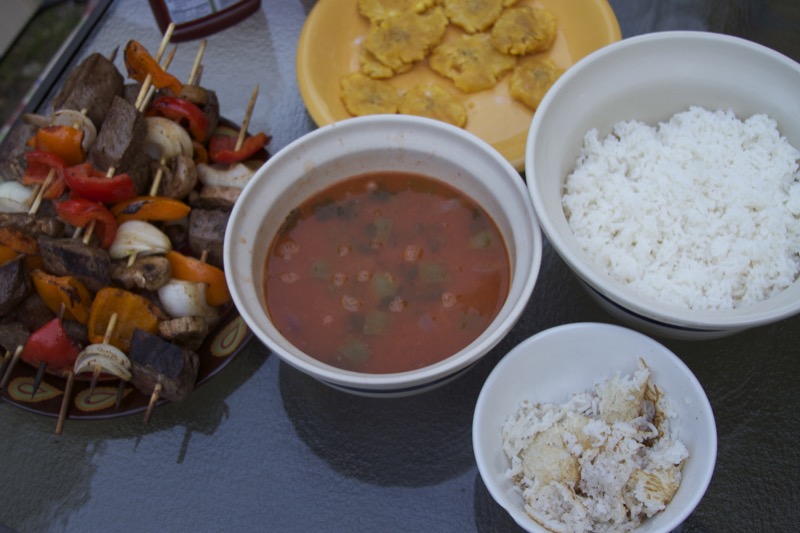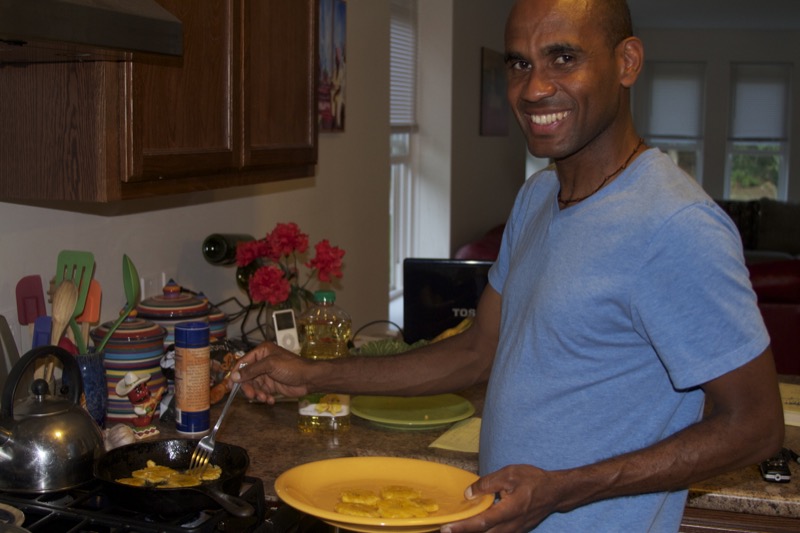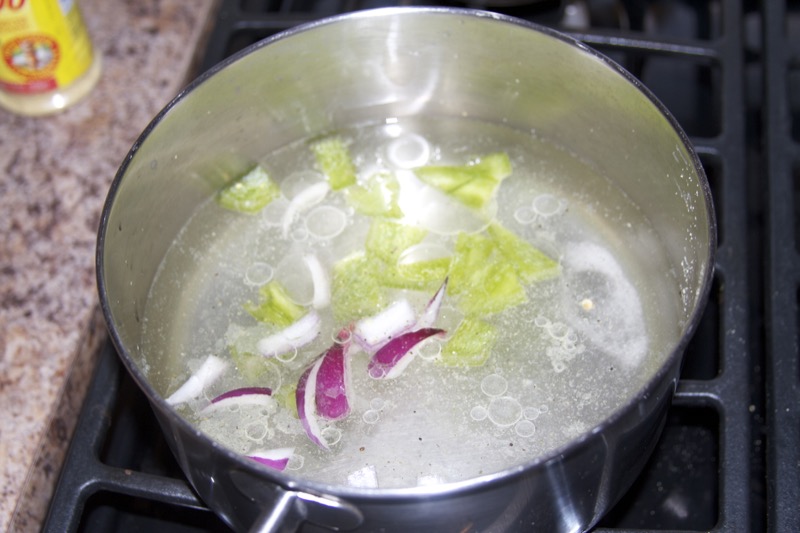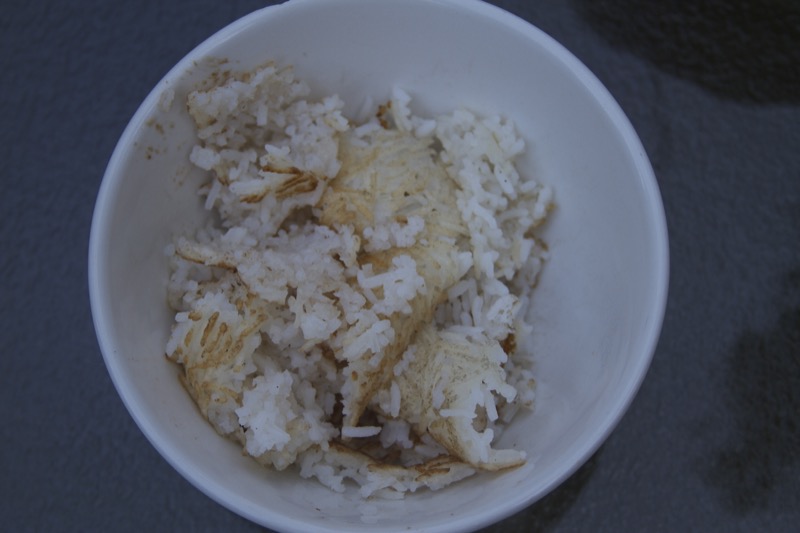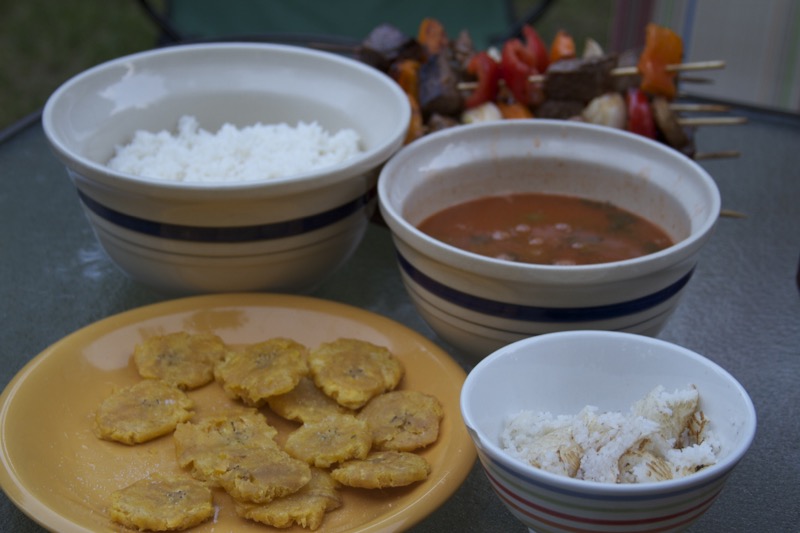Ndizi Na Mkia Wa Ngombe
As cooked with Iman Lipumba from Dar es Salaam, Tanzania, in Portland, Maine. Adapted from A Taste of Tanzania, by Miriam R. Kinunda.
Cooking Time: 2 1/2 hours
Serves: 6-8
Ingredients
- 1 Tbsp oil
- 1 lb. oxtail or beef with bones
- 1 lb. stew beef
- 1 1/2 lb. green bananas
- 1/2 yellow onion, medium dice
- 1 Tbsp tomato paste
- 1 large tomato, chopped
- 1 can coconut milk
- 1/2 tsp salt
- 2 cups beef broth (from oxtail)
- 1/2 tsp ground black pepper
- 1/2 Tbsp cumin
- 1/2 inch fresh ginger, peeled and minced or grated
- 1/4 tsp turmeric
- 1 Tbsp chopped cilantro
- 3 cloves garlic, minced
Instructions
1. Simmer the the oxtail or bone-in beef in water, along with the stew beef. Once the broth gets cooking, with a large, flat spoon skim oil and foam off the top of the broth repeatedly.
2. While the broth is cooking, peel the green bananas by slicing the skin length wise with a knife, prying your fingers between the peel and the flesh, and popping the peel off the round banana inside. Slice the banana flesh lengthwise in half, and then crosswise so you have segments. Cover the peeled banana pieces in water in a bowl until use so they don't turn brown.
3. When stew beef is tender (about an hour and a half, depending on the cut of beef you're using), remove the beef from the broth. Keep the oxtail cooking in the water longer if you would like for even more flavor in the broth. When the oxtail is tender (or you've run out of time!) remove it from the broth.
4. In another large pot, add the oil and saute the stew beef pieces on high so they're nicely browned. Remove the meat from the pan.
5. Turn the heat to medium, and add the onions to the pan and saute until soft. Add black pepper, cumin, fresh ginger, turmeric and chopped cilantro and garlic and stir for one minute.
6. Mix in the tomato paste and let cook for three minutes, stirring. Then mix in tomatoes. Lower the heat to medium-low and cover the pot. Simmer until the tomatoes soften. Use a cooking spoon to press the tomatoes to help them disappear faster.
7. Once tomatoes have blended in, add coconut milk and about 2 cups of broth and stir. Once the liquid is boiling, strain the banana pieces and add them to the liquid along with the oxtail (if your diners don't mind gnawing beef right off the bone), and the cooked stew beef. The liquid should be level with the beef and bananas. Cook until bananas are soft like cooked potato. Garnish with cilantro if you like.
Recipe Feedback
Please help improve this recipe for others by sharing your suggestions in the comment box below. Thank you.





























